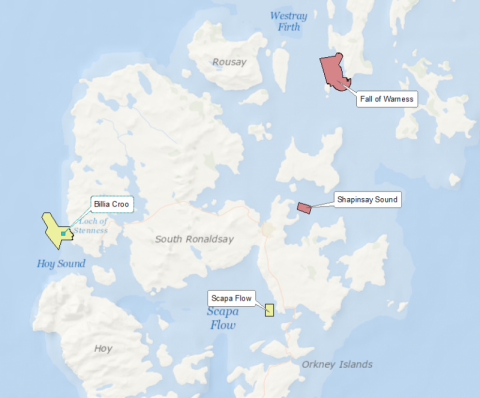EMEC - Scale Site Wildlife Observation Programme Data
EMEC has two smaller scale test sites, where developers can test prototype devices and components or try out different deployment techniques in less challenging sea conditions, located at Scapa Flow (wave) and Shapinsay Sound (tidal). These sites are not connected to the national grid, but instead specially designed buoys safely dissipate any electricity generated as well as providing a means to monitor and communicate with devices under test.
Wildlife observations, using methodologies developed by EMEC with input from the Sea Mammal Research Unit based on the methodology developed for the Fall of Warness tidal test site (Scapa Flow methodology; Shapinsay Sound methodology), commenced at these sites in June 2010. Results to date have shown a diverse range of marine birds observed throughout the year, varying with season. The Scapa Flow observation area is used by wintering birds, whereas Shapinsay Sound experiences frequent cetacean sightings, particularly in summer months. Seals are sighted infrequently at Scapa Flow in comparison to Shapinsay Sound, where both harbour seals and grey seals are seen.
In December 2012 the EMEC Monitoring Advisory Group agreed that while the wildlife observations at the scales sites had been useful for site characterisation, initial analysis of the data collected had indicated insufficient numbers to be able to detect change, and the findings in relation to scaled deployments would be of limited applicability wider afield. It was therefore agreed that the routine wildlife observations at the scale sites would cease in March 2013.


